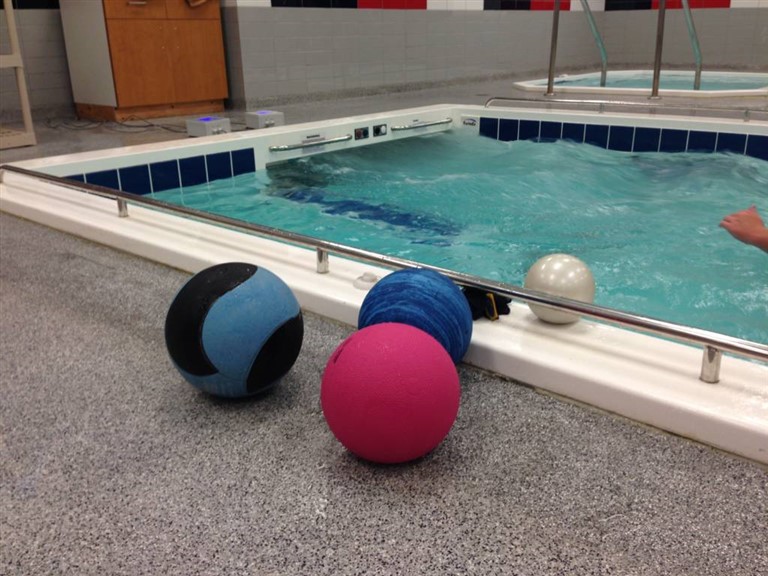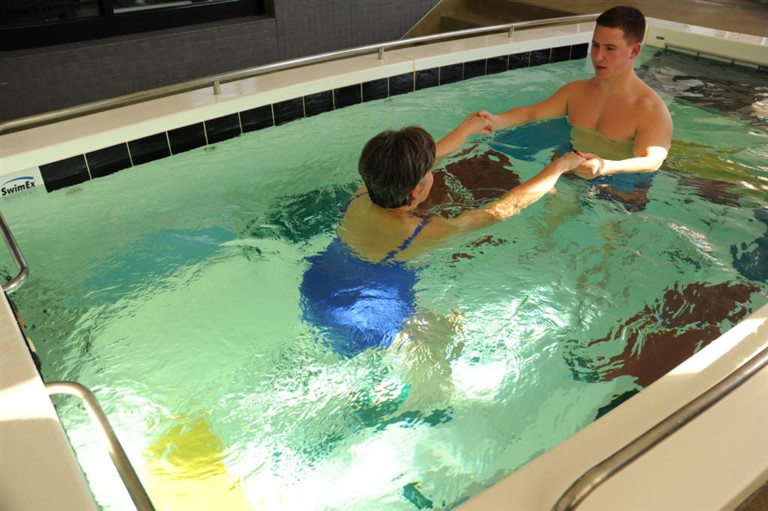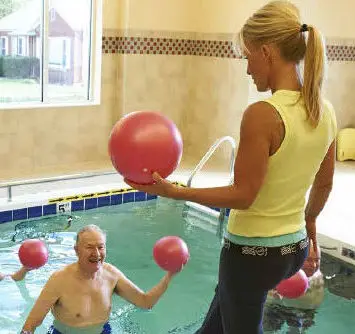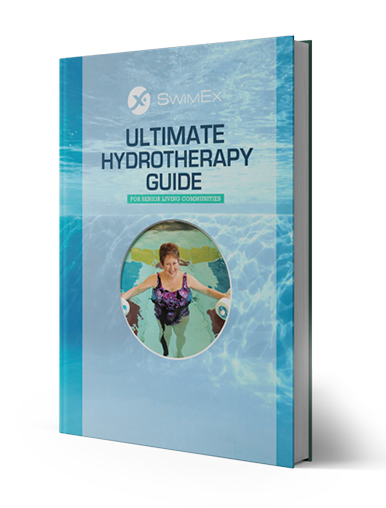As the most common form of arthritis, osteoarthritis (OA) affects 33.6% (12.4 million) adults over 65 years old, according to the CDC. The majority of cases affect the knee joint. Symptoms of osteoarthritis of the knee can vary from patient to patient, but common presentations are pain, swelling, stiffness, limited joint mobility, and potential formation of bone spurs.
There are basic methods for treating knee pain and osteoarthritis, but many physical therapists and medical professionals have been seeing great results with another solution: aquatic therapy.

The facts about knee pain and osteoarthritis
Osteoarthritis of the knee results from the degeneration or wearing down of the meniscus and/or cartilage, that causes bone-on-bone contact, creating inflammation within the knee joint.
Degeneration of the meniscus and/or cartilage can be caused by many factors, such as:
- faulty biomechanics
- muscle imbalance
- a traumatic injury
- repetitive overuse.
Other precipitating factors:
- age
- weight
- previous injury
- disease
- specific sports/activities
- occupation.
Females are also at a greater risk than males. Due to the rising prevalence of this condition, it is very common for a physical therapist to be treating multiple patients diagnosed with osteoarthritis of the knee.
A patient diagnosed with osteoarthritis of the knee is usually started on a conservative treatment approach that includes physical therapy and an anti-inflammatory.
In physical therapy, patients typically receive a combination of the following treatments:
- core and lower extremity strengthening
- stretching
- use of weight machines
- balance training
- joint mobilizations
- use of the stationary bike and the elliptical machine.
If a conservative approach fails to provide relief, the patient then returns to their doctor and is usually presented with other treatment options. These options may include cortisone injections, vicso-supplementation injections, arthroscopic surgery, and in some cases, a total knee replacement.
Based on the above mentioned “typical” course of treatment, I would like to challenge healthcare professionals to consider alternate approaches when treating osteoarthritis of the knee. As osteoarthritis symptoms result mainly from bones rubbing against one another, if we can provide these patients with increased joint space or decreased weight placed on the joint, it can possibly lead to less pain. In other words, we need to make our patients “lighter” to limit bone-on-bone contact, while simultaneously improving biomechanics.
By providing a pain-free exercise environment, patients can complete therapies without the limitations that pain and discomfort create. The ideal environment to achieve this is aquatic therapy.

Aquatic therapy provides mechanical advantage
Aquatic therapy can benefit a variety of patients, from those who have minor knee pain to a patient going through rehab after knee replacement surgery.
There are many mechanical advantages to having a patient exercise in a pool that are based on basic physics. Buoyancy can be used to assist, support and resist movement, hydrostatic pressure can decrease edema, viscosity provides resistance based on the speed and surface area of the moving object, drag provides resistance, and laminar flow provides assistance and resistance to movements.
These properties and the weightless feeling of water allows patients to successfully complete their rehab. Aquatic therapy is a powerful tool as it gives patients the mechanical advantage they need to perform the movements correctly and without the inhibition of pain.
~ Authored by Liz Lecomte

FREE HYDROTHERAPY GUIDE!
For Senior Living
Everything you need to run a successful hydrotherapy program

